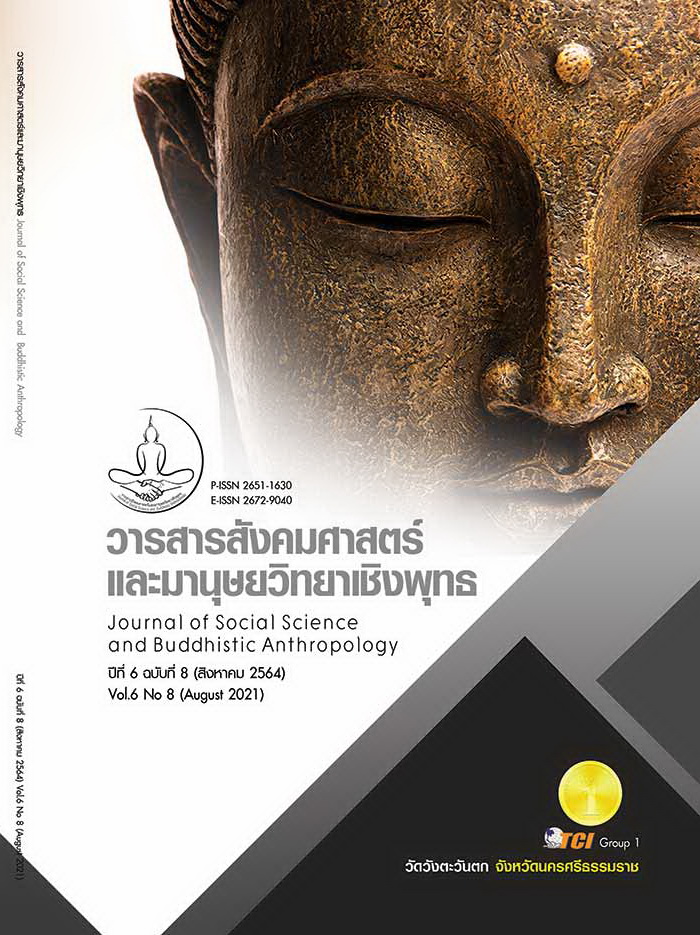THE PROCESS AND MODEL OF COLLABORATIVE GOVERNANCE AMONG PARTNERSHIPS CONCERNING CORPORATE SOCIAL RESPONSIBILITY: A CASE STUDY OF THE CEMENT PARTNERSHIP PROJECT, KAENG KHOI DISTRICT, SARABURI PROVINCE
Keywords:
Corporate Social Responsibility (CSR), Collaborative Governance, Cement Partnership Project, Process and Model of Collaborative Governance, Various AssociatesAbstract
The objectives of this research article was to study the process and model of collaborative governance among partnerships concerning Corporate Social Responsibility (CSR) of Cement Partnerships Project in Kaeng Khoi District, Saraburi Province using qualitative research methods. Based on the data driven from document analysis and in-depth interviews conducted with purposively selected 34 informants, it was evident that collaborative governance among partnerships concerning Corporate Social Responsibility (CSR) under Cement Partnership Project was divided into four salient periods. The initial period of collaboration was used to raise mutual awareness regarding responsibility for community and society as well as environmentally friendly manufacturing. The second period was the collaboration building period which was consisted of two levels – intra-organizational and inter-organizational collaboration. The Cement Partnership Project under Thai Cement Manufacturers Association (TCMA) was considered as inter-organizational collaboration. The third period was the expansion of the project operation concerning CSR. In this stage, the entrepreneurs (companies) reviewed the collaborative operation under “Cement Partnership Project.” Community/people expanded role model of community successfully operated under the Cement Partnerships Project. While government sector /educational sector (schools) were the supportive agency encouraging entrepreneurs (companies) for working in collaboration. The fourth period was the period of working in collaboration towards sustainability. The entrepreneurs (companies) aimed at working collaboratively at policy and area levels for environmentally conscious mining. Community/people worked collaboratively towards the shared goals of “build collaboratively, do collaboratively, and develop collaboratively” Furthermore, government sectors/educational sectors (schools) stressed the collaboration between the government sectors and educational sectors through the design of lessons emphasizing skills development and knowledge construction by students themselves.
References
ทิพวรรณ หล่อสุวรรณรัตน์. (2556). ทฤษฎีองค์การ: มุมมองต่างกระบวนทัศน์ Organization theory: multi-paradigm perspectives. สมุทรปราการ: ดี.เค.ปริ้นติ้งเวลด์.
ปฐม มณีโรจน์. (2552). ภาษาสาธารณะ: (7) ระบบอภิบาล (Governance). เรียกใช้เมื่อ 29 กันยายน 2562 จาก http://oknation.nationtv.tv/blog/DrPatom/2009/10/14/entry-1
พฤกษา เครือแสง และมณีรัตน์ จันทร์หนิ้ว. (2560). มาตรการทางกฎหมายในการส่งเสริมการสร้างธุรกิจอย่างยั่งยืนโดยใช้หลักเกณฑ์ความรับผิดชอบต่อสังคม. วารสารผู้ตรวจการแผ่นดิน, 10(2), 72-100.
สมาคมอุตสาหกรรมปูนซีเมนต์ไทย. (2561). รายงานการดำเนินงานปี 2561. เรียกใช้เมื่อ 29 กันยายน 2562 จาก https://drive.google.com/file/d/1ZPOzl3eTiuFz7YnDqAy3qcSDrFQSXHgf/view
Aguilera, R. V. et al. (2007). Putting the S Back in Corporate Social Responsibility: A Multilevel Theory of Social Change in Organizations. The Academy of Management Review, 32(3), 836-863.
Arevalo, J. A. et al. (2011). Introduction to the special issue: Integrating sustainability in business models. Journal of Management Development, 30(10), 941-954.
Byggeth, S. & Hochschorner, E. (2006). Handling trade-offs in ecodesign tools for sustainable product development and procurement. Journal of Cleaner Production, 14(15-16), 1420-1430.
Dougherty, D. & Dunne, D. D. (2011). Organizing ecologies of complex innovation. Organization Science, 25(5), 1214-1223.
Elmuti, D. & Kathawala, Y. (2001). An overview of strategic alliances. Management Decision, 39(3), 205-218.
Friedman, M. (2007). The social responsibility of business is to increase its profits. In I. C. governance. Springer.
Garud, R. & Gehman, J. (2012). Metatheoretical perspectives on sustainability journeys: Evolutionary, relational and duration. Research Policy, 41(6), 980-995.
Ghillyer, A. (2008). Business ethics: A real world approach. NewYok: McGraw-Hill College.
Gioia, D. A. M. et al. (2000). Organizational Identity, Image, and Adaptive Instability. Academy of Management Review, 25(1), 63-81.
Hatch, M. J. & Schultz, M. (1997). Relations Between Organizational Culture, Identity and Image. European Journal of Marketing, 31(5/6), 356-365.
Istocescu, A. (2005). The Management in the Islamic countries (the second part). Economia. Seria Management, 8(1), 75-83.
Lewis, J. D. (1990). Partnerships for profit: structuring and managing strategic alliances. New York: The Free Press.
Wendy, L. T. et al. (2010). Corporate Social Responsibility Reports: A thematic Analysis Related to Supply Chain Management. Journal of Supply Chain Management, 46(1), 19-44.
Zineldin, M., & Bredenlöw, T. (2003). Strategic alliance: Synergies and challenges. International Journal of Physical Distribution & Logistic Management, 33(5), 449-464.








